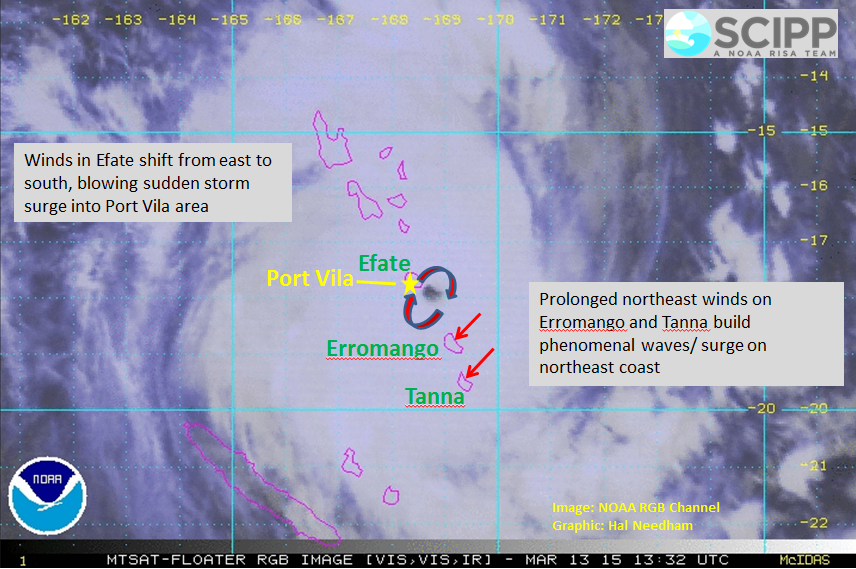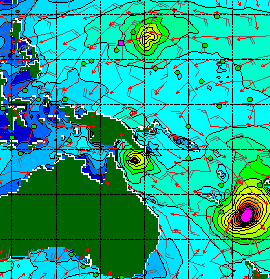Tropical Cyclone (TC) Pam devastated a large region of the South Pacific last week, as it slammed into Vanuatu, packing winds of 165 mph (265 kph). According to Dr. Jeff Masters’ WunderBlog, TC Pam ranks among the top two most intense cyclones to visit this region; the other was TC Zoe in 2002.
MSNBC quotes Oxfam’s Vanuatu Director, Colin Collet van
Rooyen, as stating, “This is likely to be one of the worst disasters ever seen
in the Pacific.”
Wind and storm surge inflicted mass destruction across Vanuatu.
Image: Luo Xiangfeng/Xinhua/Associated Press
The world is just beginning to get a better picture of Pam’s
destruction in Vanuatu, as aid workers are arriving in rural villages. Beyond the fatalities, injuries and material destruction, food and water shortages are
also severe in some locations. ABC NEWS Australia has reported that residents on Vanuatu’s island of
Moso were forced to drink salt water to stay alive. Unfortunately, storm surges
often destroy the freshwater drinking supplies as they overwash small islands,
leaving them without fresh water.
Although Pam's winds were most severe in Vanuatu, its surge inundated this beach at Tarawa, Kiribati as well.
Image: Plan International Australia
Pam's surge severely damaged the causeway between Betio and Bairiki in Kiribati.
Image: Otobina Karissa Temakei
Although Pam’s fury was greatest in Vanuatu, perhaps the
most surprising aspect of this cyclone was its ability to inundate island
nations far from its path. Pam’s surge overwashed portions of both Kiribati (pronounced
Kiribash) and Tuvalu from great distances. Pam was centered approximately 700 miles
(1126 km) southwest of Tuvalu as it inundated this island nation. This
remarkable span is equivalent to an Atlantic hurricane striking Georgia while
inundating New York City with saltwater, or a non-tropical cyclone centered
along Ireland’s southwest coast inundating Portugal.
Pam's surge severely damaged the Nanumea School House in Tuvalu.
Image: @UNDP_Pacific
The impacts of this widespread surge are tremendous.
Solomon Star News reported that the surge has displaced as many as 45% of
Tuvalu’s residents, according to Tuvalu’s Prime Minister.
Pam's storm surge inflicted severe impacts on Tuvalu, located at least 700 miles (1126 km) from the storm's path.
Image: @unisdr
As we look to the future, Pam’s surge raises many important
research questions. How often have tropical cyclones inundated islands with salt
water from 700 miles (1126 km) away? What role does sea level rise play in an
event like this? Should we expect more far-reaching surges in the future, as
global climate warms and sea levels rise, and, if so, what is the best course
of action to minimize losses?
Media Links:















